चिया, जिसे सैल्विया हिस्पैनिका के नाम से भी जाना जाता है, लेमिएशिएइ परिवार से संबंधित एक जड़ी-बूटी वाला पौधा है। यह मूल रूप से उत्तरी ग्वाटेमाला और दक्षिणी मेक्सिको में पाया जाता है। यह पौधा बहुत से ड्राइड इनडेहिसेंट फ्रूट्स पैदा करता है, जिन्हें आमतौर पर सीड्स (बीज) कहा जाता है।1
आजकल चिया की खेती कोलंबिया, ऑस्ट्रेलिया, बोलीविया, पेरू, ग्वाटेमाला, मैक्सिको और अर्जेंटीना में की जाती है। पूर्व-कोलंबियाई लोग 16वीं शताब्दी में ताकत, ऊर्जा और स्टैमिना पाने के लिए चिया का सेवन करते थे। चिया सीड्स से तेल निकाला जाता है; इस तेल का उपयोग कॉस्मेटिक्स में किया जा सकता है। सांस की बीमारी से जुड़े इन्फेक्शन के लिए, इस पौधे की जड़ों, पत्तियों और शाखाओं सहित इसके अन्य भागों का आमतौर पर कम ही इस्तेमाल होता है।2
प्रति 100 ग्राम चिया सीड्स की न्यूट्रीशनल वैल्यू इस प्रकार है:3
| पोषक तत्त्व | प्रति 100 ग्राम कंटेंट |
| पानी | 5.8 g |
| कार्बोहाइड्रेट | 42.1 g |
| प्रोटीन | 16.5 g |
| फैट | 30.7 g |
| एनर्जी | 486 kcal |
| फाइबर | 34.4 g |
| आयरन | 7.72 mg |
| कैल्शियम | 631 mg |
| मैगनीशियम | 335 mg |
| सोडियम | 16 mg |
| पोटैशियम | 407 mg |
| फ़ॉस्फोरस | 860 mg |
| कॉपर | 0.924 mg |
| ज़िंक | 4.58 mg |
| मैंगनीज़ | 2.72 mg |
| सेलेनियम | 55.2 µg |
| विटामिन ए | 54 IU |
| विटामिन बी1 (थायमिन) | 0.62 mg |
| विटामिन बी2 (राइबोफ्लेविन) | 0.17 mg |
| विटामिन बी3 (नियासिन) | 8.83 mg |
| विटामिन बी9 (फोलेट) | 49 µg |
| विटामिन सी | 1.6 mg |
| विटामिन ई | 0.5 mg3 |
चिया सीड्स के शानदार उपयोग इन खूबियों की वजह से हो सकते हैं:
चिया सीड्स के शानदार उपयोग अलग-अलग स्थितियों के लिए फायदेमंद हो सकते हैं। हालांकि, इस बारे में अधिक शोध की आवश्यकता है कि मानव स्वास्थ्य के लिए चिया सीड्स कितने फायदेमंद हैं।
पशुओं में किए कुछ अध्ययनों से पता चला है कि चिया सीड्स टाइप 2 डायबिटीज़ पर लाभकारी प्रभाव डाल सकते हैं। Chicco et al. 2009 द्वारा पशुओं में किए एक अध्ययन में, चिया सीड्स ने आंतरिक फैटी टिशू और इंसुलिन रेजिस्टेंस को घटाया, यह दर्शाता है कि चिया सीड्स की लिपिड और ग्लूकोज़ होमियोस्टेसिस (संतुलन बनाए रखने) में भूमिका हो सकती है।4
यह जानकारी काफ़ी नहीं है क्योंकि ये अध्ययन जानवरों पर किए गए हैं। हालांकि, शरीर में ब्लड शुगर लेवल बनाए रखने में चिया सीड्स के ऐसे शानदार उपयोग को मंज़ूरी देने के लिए मनुष्यों पर अभी और अध्ययन की आवश्यकता है।
सूजन वाले रोगों में त्वचा लाल होना, दर्द और सूजन जैसे लक्षण होते हैं, जिससे ज़रूरी कामों में दिक्कत आ सकती है। ऐसा देखा गया है कि अपने आहार में चिया सीड्स ऑइल का उपयोग करने से प्रो-इन्फ्लेमेट्री एजेंटों (जो सूजन में शामिल होते हैं) के जोखिम को कम किया जा सकता है। इसलिए, ऐसा कहा जाता है कि चिया सीड्स ऑइल सूजन वाले रोगों को कम करने में लाभकारी हो सकता है।4
हालांकि यह जानकारी काफ़ी नहीं है और यह कहने के लिए और ज़्यादा वैज्ञानिक प्रमाण की आवश्यकता है कि चिया सीड्स सूजन वाले रोगों के लिए लाभकारी हैं।
रक्त में हाई-डेंसिटी लिपोप्रोटीन (एचडीएल) कोलेस्ट्रॉल (बैड कोलेस्ट्रॉल) का स्तर बढ़ा होने पर मनुष्यों में दिल के रोग हो सकते हैं। ऐसा माना जाता है कि चिया सीड्स का सेवन सीरम कोलेस्ट्रॉल के स्तर को कम कर सकता है, क्योंकि इसमें अनसैचुरेटेड ओमेगा -3 फैटी एसिड और डाइटरी फाइबर बहुत ज़्यादा होता है।2 इसलिए, चिया सीड्स दिल के रोगों से लड़ने में फायदेमंद हो सकते हैं। हालांकि, ऐसे दावों का समर्थन करने के लिए बड़े पैमाने पर शोध की आवश्यकता होगी।
हाई ब्लड प्रेशर और डिसलिपिडेमिया (खून में फैट या कोलेस्ट्रॉल का बढ़ा हुआ स्तर) दिल के रोगों के लिए बहुत बड़े जोखिम कारक हो सकते हैं। कुछ अध्ययनों से पता चला है कि चिया सीड्स में ब्लड प्रेशर और डिसलिपिडेमिया को मैनेज करने की क्षमता हो सकती है। जिन लोगों को हाई ब्लड प्रेशर था, चिया सीड का आटा खाने पर उनके ब्लड प्रेशर में कमी पाई गई। यह बड़ी मात्रा में फैटी एसिड मौजूद होने के कारण हो सकता है जिनमें एंटीइंफ्लेमेटरी और एंटीऑक्सीडेंट गुण होते हैं।2 यह जानकारी काफ़ी नहीं है और मनुष्यों में हाई ब्लड प्रेशर और डिसलिपिडेमिया का इलाज करने में चिया सीड्स के प्रभावों को अपनाने के लिए अभी और अध्ययन की आवश्यकता है।
चूंकि चिया सीड्स में कार्बोहाइड्रेट कम और डाइटरी फाइबर ज़्यादा होते हैं, इसलिए वे भूख लगने की इच्छा को कम कर सकते हैं और पेट ज़्यादा भरा लगता है (क्षमता से अधिक खाए जाने की स्थिति)। Grancieri et al. 2019 द्वारा एक समीक्षा रिपोर्ट से पता चलता है कि चिया सीड्स का सेवन करने से ज़्यादा वज़न और डायबिटीज़ के वयस्क रोगियों का वज़न कम हो सकता है, कमर का नाप कम हो सकता है और एडिपोनेक्टिन (एक प्रोटीन हार्मोन जो सूजन और रक्त में फैट के जमाव को कम करता है) बढ़ सकता है। इसके अलावा, ज़्यादा वज़न वाले और मोटे लोग भी चिया सीड्स खाकर वज़न और फैट कम कर सकते हैं।2 Lombardo et al. 2009 और Morato et al. 2015 द्वारा मानवों में किए गए एक अध्ययन में, एक महीने तक चिया सीड्स लेने के बाद कमर के नाप में अच्छी-खासी कमी देखी गई।4 हालांकि, यह जानकारी काफ़ी नहीं है और मनुष्यों में वज़न घटाने के प्रबंधन में चिया सीड्स के शानदार उपयोग का समर्थन करने के लिए इस विषय पर और अधिक शोध की आवश्यकता है।
हालांकि ऐसे अध्ययन हैं जो विभिन्न स्वास्थ्य स्थितियों में चिया सीड्स के लाभ दिखाते हैं, लेकिन यह जानकारी काफ़ी नहीं है। और इसलिए, मानव स्वास्थ्य पर चिया सीड्स किस हद तक लाभकारी हैं यह तय करने के लिए अभी और अध्ययन की आवश्यकता है। इसके अलावा, हर व्यक्ति इन हर्ब (जड़ी-बूटियों) के प्रति अलग-अलग प्रतिक्रिया दे सकता है। इसलिए, किसी भी स्वास्थ्य समय के लिए चिया सीड्स का उपयोग करने से पहले डॉक्टर से सलाह करना बहुत ज़रूरी है।
चिया सीड्स का उपयोग इस प्रकार किया जा सकता है:
चिया सीड्स से बने किसी भी हर्बल सप्लीमेंट को लेने से पहले लोग एक अनुभवी डॉक्टर से सलाह ज़रूर लें। हम आपको सलाह देते हैं कि किसी डॉक्टर या आयुर्वेदिक चिकित्सक से सलाह लिए बिना अपनी चल रही दवाओं को न तो बंद करें और न ही इसके बजाय कोई आयुर्वेदिक/हर्बल प्रिपरेशन लेना शुरू करें। वे आपके लिए दवा को सही रूप में और सही खुराक में लेने की सलाह देंगे।
हालांकि चिया सीड्स सुरक्षित होते हैं, लेकिन पेट से संबंधित कुछ साइड इफ़ेक्ट (सही से नहीं बताए गए) देखे गए हैं।5
इसलिए, अगर आप इस तरह के किसी भी साइड इफ़ेक्ट का अनुभव करते हैं, तो अपने डॉक्टर से फौरन मेडिकल हेल्प लें जिसने आपको यह दवा लेने की सलाह दी है। आपके लिए सही इलाज वही बता सकेंगे।
कम मात्रा में चिया सीड्स का सेवन सुरक्षित है। हालांकि, आम सावधानियां बरतने की आवश्यकता है।
प्राकृतिक उत्पाद साथ में लेने से वे आपके मौजूदा इलाज के साथ इंटरैक्शन कर सकते हैं, इसलिए आपको हमेशा अपने आयुर्वेदिक चिकित्सक को अपने मौजूदा इलाजों के बारे में बताना चाहिए और उनके द्वारा आपकी स्थिति में लाभ के लिए कोई प्राकृतिक उत्पाद वाली खुराक लिखने से पहले, उसके साइड इफेक्ट्स पर चर्चा करें।
चिया बीज आपके खाने में शामिल करने के लिए एक पौष्टिक विकल्प हैं। ये पाचन में मदद करते हैं और दिल को स्वस्थ रखने में फायदेमंद हैं। इनमें प्रोटीन, एंटीऑक्सीडेंट और कैल्शियम व मैग्नीशियम जैसे ज़रूरी मिनरल्स भी होते हैं। यही वजह है कि ये ऊर्जा बढ़ाने और पूरे शरीर के स्वास्थ्य को बेहतर बनाने में अच्छे साबित होते हैं।
चिया सीड्स से कई स्वास्थ्य लाभ हो सकते हैं। वे डायबिटीज़, हाई ब्लड प्रेशर, दिल के रोगों और मोटापे के लिए कारगर साबित हो सकते हैं। इनमें एंटी-कैंसर, एंटीऑक्सिडेंट और एंटी-इंफ्लेमेटरी गुण भी हो सकते हैं।2,4 हालांकि, किसी भी स्वास्थ्य स्थिति के लिए चिया सीड्स का उपयोग करने से पहले हमेशा डॉक्टर से सलाह ज़रूर लेनी चाहिए
Morato et al. 2015 द्वारा किए एक अध्ययन में, चिया सीड्स ने ज़्यादा वज़न वाले और मोटे लोगों में शरीर के वज़न और फैट को कम किया। चिया सीड्स में कार्बोहाइड्रेट कम और डाइटरी फाइबर ज़्यादा होते हैं, इसलिए वे भूख लगने की इच्छा को कम कर सकते हैं और पेट ज़्यादा भरा लगता है।2 इसलिए, वज़न कम करने में ये आपको फायदा पहुंचा सकते हैं। हालाँकि, इस दावे को पुख्ता करने के लिए मनुष्यों पर अभी और अध्ययन की आवश्यकता है।
चिया सीड्स डायबिटीज़ के लिए लाभकारी हो सकते हैं। कुछ पशु और मानव अध्ययनों में पाया गया कि चिया सीड्स डायबिटीज़ को नियंत्रित करने में बहुत असरदार हो सकते हैं।4 जानवरों में, चिया सीड्स ने आंतरिक फैटी टिशू और इंसुलिन रेजिस्टेंस को घटाया और चिया सीड्स की लिपिड और ग्लूकोज़ लेवल का संतुलन बनाए रखने में भूमिका हो सकती है।4 हालांकि, यह जानकारी काफ़ी नहीं है और इस दावे को पुख्ता करने के लिए मानवों में और ज़्यादा अध्ययन की आवश्यकता है।
गर्भावस्था के दौरान चिया सीड्स के सुरक्षित उपयोग के बारे में उपलब्ध डेटा काफ़ी नहीं है। इसलिए, गर्भावस्था के दौरान चिया सीड्स लेने से पहले अपने डॉक्टर से सलाह लें।
हाँ, चिया सीड्स में कई पोषक तत्व होते हैं, जिनमें कार्बोहाइड्रेट, प्रोटीन, फैट, फाइबर, एनर्जी, आयरन, कैल्शियम, मैग्नीशियम, सोडियम, पोटेशियम, फ़ॉस्फोरस, कॉपर, ज़िंक, मैंगनीज़, सेलेनियम, विटामिन ए, बी1, बी2, बी3, बी9, सी, और ई शामिल हैं।3
हाँ, चिया सीड्स से एलर्जी हो सकती है। जिन लोगों को सरसों और तिल से एलर्जी है उन्हें चिया सीड्स नहीं लेने चाहिए।5
आप चिया सीड्स को साबुत, बीज का तेल, बीज का आटा, शाखाओं, जड़ों या पत्तियों के रूप में उपयोग कर सकते हैं।1,2
1. De Falco B, Amato M, Lanzotti V. Chia seeds products: an overview. Phytochem Rev. 2017;16(4):745–60. Available at: https://www.researchgate.net/publication/316994147_Chia_seeds_products_an_overview
2. Grancieri M, Martino HSD, Gonzalez de Mejia E. Chia Seed (Salvia hispanica L.) as a Source of Proteins and Bioactive Peptides with Health Benefits: A Review. Compr Rev Food Sci Food Saf. 2019;18(2):480–99. Available at: https://pubmed.ncbi.nlm.nih.gov/33336944/
3. Restivo J. Chia seed benefits: What you need to know [Internet]. Harvard Health; 2024 [cited 2025 Feb 4]. Available from: https://www.health.harvard.edu/nutrition/chia-seed-benefits-what-you-need-to-know
4. Ulbricht C, Chao W, Nummy K, Rusie E, Tanguay-Colucci S, Iannuzzi C, et al. Chia (Salvia hispanica): A Systematic Review by the Natural Standard Research Collaboration. Rev Recent Clin Trials. 2009;4(3):168–74. Available at: https://pubmed.ncbi.nlm.nih.gov/20028328/
5. Dietary chia seed (Salvia hispanica L.) rich in α-linolenic acid improves adiposity and normalises hypertriacylglycerolaemia and insulin resistance in dyslipaemic rats. [cited 2025 Feb 4]. Available at: https://www.cambridge.org/core/journals/british-journal-of-nutrition/article/dietary-chia-seed-salvia-hispanica-l-rich-in-linolenic-acid-improves-adiposity-and-normalises-hypertriacylglycerolaemia-and-insulin-resistance-in-dyslipaemic-rats/9B9047EBE0643F49D68AD61EF00CD02D
6. Dickens B, Sassanpour M, Bischoff EL. The effect of chia seeds on high-density lipoprotein (HDL) cholesterol. Cureus. 2023 Jun 13 [cited 2025 Feb 25]. Available from: https://pmc.ncbi.nlm.nih.gov/articles/PMC10339661/#ref-list1
7. Da Silva Marineli R, Moura CS, Moraes ÉA, Lenquiste SA, Lollo PCB, Morato PN, et al. Chia (Salvia hispanica L.) enhances HSP, PGC-1α expressions and improves glucose tolerance in diet-induced obese rats. Nutrition. 2014 Dec 20 [cited 2025 Feb 25]. Available from: https://pubmed.ncbi.nlm.nih.gov/25837222/
8. Ullah R, Nadeem M, Khalique A, Imran M, Mehmood S, Javid A, et al. Nutritional and therapeutic perspectives of Chia (Salvia hispanica L.): A review. Journal of Food Science and Technology. 2015 Oct 1 [cited 2025 Feb 25]. Available from: https://pmc.ncbi.nlm.nih.gov/articles/PMC4926888/
9. Toscano LT, Da Silva CSO, Toscano LT, De Almeida AEM, Da Cruz Santos A, Silva AS. Chia flour supplementation reduces blood pressure in hypertensive subjects. Plant Foods for Human Nutrition. 2014 Nov 18 [cited 2025 Feb 25]. Available from: https://pubmed.ncbi.nlm.nih.gov/25403867/
10. Chia seed (Salvia hispanica L.) supplementation to the diet of adults with type 2 diabetes improved systolic blood pressure: A randomized controlled trial. Available from: https://pubmed.ncbi.nlm.nih.gov/33530854/
Disclaimer: The information provided here is for educational/awareness purposes only and is not intended to be a substitute for medical treatment by a healthcare professional and should not be relied upon to diagnose or treat any medical condition. The reader should consult a registered medical practitioner to determine the appropriateness of the information and before consuming any medication. PharmEasy does not provide any guarantee or warranty (express or implied) regarding the accuracy, adequacy, completeness, legality, reliability, or usefulness of the information; and disclaims any liability arising thereof.
बवासीर को हेमरॉइड्स के रूप में भी जाना जाता है, ये गुदा नहर वाले हिस्से में सूजी हुई नसें हैं। अपनी सामान्य अवस्था में, वे मल के मार्ग को नियंत्रित करने के लिए आरामदायक गद्दे की तरह से काम करती हैं। हालांकि बवासीर का सही कारण मालूम नहीं है, लेकिन अध्ययनों से पता चला है कि बवासीर के लिए बहुत हद तक जिम्मेदार वे कारक होते हैं जो मल त्यागने के दौरान गुदा वाले हिस्से में दबाव बढ़ाते हैं।
बैठते या मल त्याग करते समय गुदा वाले हिस्से में जलन जैसे लक्षणों से पीड़ित व्यक्ति को समस्या की पहचान कराने के लिए डॉक्टर से परामर्श लेना चाहिए। डॉक्टर द्वारा बताए गए उपचार का पालन करें। डॉक्टर की लिखी दवाओं या सर्जरी के साथ-साथ, आपको एक स्वस्थ जीवन शैली और आहार का पालन करने के लिए कहा जाएगा। शुरुआती उपायों में पूरे शरीर में पानी की भरपूर मात्रा बनाए रखने के लिए फाइबर का सेवन बढ़ाना, आराम करना और भरपूर तरल पदार्थ पीना शामिल है। समस्या वाले हिस्से में मेडिकेटिड क्रीम लगाई जा सकती है, हालांकि आपकी स्थिति की गंभीरता के आधार पर उनके असर में अंतर हो सकता है।
बवासीर का सही-सही कारण अभी भी मालूम नहीं है। हालांकि यह पता लगाना मुश्किल है कि बवासीर का सटीक कारण क्या है, लेकिन कई कारक हैं जो बवासीर में योगदान कर सकते हैं:
अन्य कारक जो बवासीर होने में समान रूप से योगदान कर सकते हैं वे ये हो सकते हैं:

गर्म पानी से नहाना, बवासीर के कारण होने वाली जलन को शांत करने में मदद कर सकता है। सिटज़ बाथ इस्तेमाल करने का प्रयास करें। सिट्ज़ बाथ एक ऐसी विधि है जिसमें एक छोटे प्लास्टिक के टब का उपयोग किया जाता है जो टॉयलेट सीट पर फिट हो जाता है ताकि आप प्रभावित हिस्से को बस उसमें डुबो सकें। इस पानी में बीटाडीन का घोल या डॉक्टर द्वारा सुझाए गए अन्य एंटीसेप्टिक घोल का उपयोग किया जा सकता है।

एक बार में कम से कम 15 मिनट तक सूजन से राहत पाने के लिए गुदा वाले हिस्से पर आइस पैक या कोल्ड कंप्रेस लगाएं। बड़े, दर्द करने वाले बवासीर के लिए ये कोल्ड कंप्रेस दर्द से निपटने का एक बेहद असरदार उपाय हो सकते हैं।
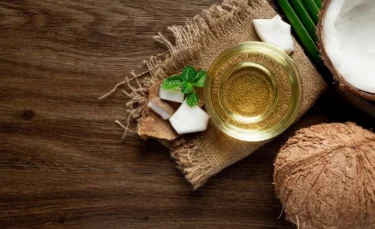
2008 में किए गए शोध के अनुसार, नारियल के तेल में मज़बूत एंटी-इंफ्लेमेटरी (सूजन मिटाने वाले) गुण होते हैं जो त्वचा लाल होने और सूजन को कम कर सकते हैं। इसमें एनाल्जेसिक (दर्द निवारक) गुण होते हैं जो बवासीर के कारण होने वाली परेशानी को कम करने में मदद कर सकते हैं। इसमें एंटीबैक्टीरियल (जीवाणु को मारने वाले) गुण भी होते हैं जो बवासीर के लक्षणों को कम करने में मदद करते हैं।

मल त्याग के बाद टॉयलेट पेपर इस्तेमाल करने से मौजूदा बवासीर में जलन हो सकती है। भीगे हुए वाइप्स, और जलन पैदा किए बिना आपको साफ रखने में मदद करते हैं। आप ऐसे वाइप्स का भी इस्तेमाल कर सकते हैं जिनमें एंटी-हेमरॉइड (बवासीर-रोधी) तत्व होते हैं, जैसे कि विच हेज़ल या एलोवेरा।

बवासीर के लक्षणों को असरदार तरीके से प्रबंधित करने के लिए घर पर व्यायाम करना एक शानदार उपाय हो सकता है। नियमित पेल्विक फ्लोर एक्सरसाइज़ करना बवासीर के लिए एक लॉन्ग-टर्म सॉल्युशन साबित हो सकता है। अपनी पेल्विक फ्लोर की माँसपेशियों को मज़बूत करने से, बिना ज़्यादा दबाव डाले अपनी आंत को खाली करने में मदद मिल सकती है।

आराम करने और तनाव को असरदार तरीके से प्रबंधित करने के लिए एक कड़ा प्रयास करने से आंतों को अच्छी आदतें अपनाने में मदद मिलती है। रात में भरपूर नींद लेने से भी पाचन स्वास्थ्य अच्छा बनाए रखने में मदद मिलती है। ऐसा होने पर, आँतों से मल भी आसानी से होकर जा पाता है।

कहने की ज़रूरत नहीं है, लेकिन भरपूर पानी और फलों के रस जैसे अन्य स्वस्थ तरल पीने से आपकी आंत कम शुष्क होती है। जब आपका शरीर अच्छी तरह से हाइड्रेटेड (पानी की कमी न होना) होता है, तो आपका पाचन स्वास्थ्य बेहतर होने लगता है जिससे आपको मल त्याग के दौरान दबाव कम डालना पड़ता है।

भरपूर मात्रा में अघुलनशील और साथ ही घुलनशील फाइबर वाला संतुलित आहार लेने से आपको नियमित रूप से मलत्याग करने में मदद मिलेगी। अघुलनशील फाइबर आपके मल का वज़न बढ़ाता है, जिससे आपको मल त्यागने के दौरान ज़ोर कम लगाना पड़ता है। फाइबर को आंतों को स्वस्थ रखने में मदद करने के लिए भी जाना जाता है।
Read in English: 8 Best Home Remedies For Piles
ऊपर बताए गए बवासीर के लक्षणों में से कोई भी लक्षण दिखाई देने पर आपको बिना देरी किए डॉक्टर की सलाह लेनी चाहिए। ये लक्षण कोलोरेक्टल कैंसर जैसी अन्य गंभीर स्थितियों में आम हैं। इसलिए, एक डॉक्टर से इनकी जल्दी पहचान कराना ज़रूरी है। अपने डॉक्टर को सूचित करें अगर- :
बहुत सारे तरल पदार्थ पीना और फाइबर युक्त आहार लेना, खुजली और दर्द को शांत करने के लिए कुनकुने पानी से नहाना, डॉक्टर द्वारा लिखे गए टॉपिकल ऑइंटमेंट लगाना, व्यायाम करना और नीचे वाले भागों को सूखा रखना, ये सभी बवासीर से तेज़ी से राहत पाने में आपकी मदद करने के लिए एक कैटेलिस्ट के तौर पर काम करेंगे। डॉक्टर से परामर्श करना और उनके बताए इलाज का पालन करना ज़रूरी है।
अगर आपको बवासीर के लक्षण दिखाई देने लगे हैं, तो घर और बाहर के खाने में दूध और पनीर जैसे डेयरी प्रोडक्ट, मैदा, प्रोसेस्ड मीट, तला हुआ भोजन, मसालेदार खाद्य पदार्थ और लाल मांस के इस्तेमाल से बचना चाहिए। कहने का मतलब यह है, कि ऐसे भोजन से बचना चाहिए जो सूजन और कब्ज़ की संभावना को बढ़ाते हैं।
आपके रोग के कारणों को ध्यान में रखते हुए, आपके डॉक्टर आपकी स्थिति के आधार पर बवासीर के लिए सबसे सही दवाएं आपको लिखकर देंगे। इसमें सूजी हुई नसों को सिकोड़ने के लिए कुछ दवाएं, कुछ दर्द निवारक और कब्ज़ जैसी पाचन संबंधी समस्याओं का प्रबंधन करने के लिए दवाएं शामिल हो सकती हैं।
हां, बवासीर में दर्द और खुजली दोनों हो सकती हैं। बवासीर, गुदा और मलाशय के निचले हिस्से में सूजी हुई और फूली हुई नसें होती हैं। पारंपरिक तौर पर, बवासीर की समस्या शौचालय में लंबे समय तक बैठे रहने के साथ-साथ मल त्याग के दौरान ज़ोर लगाने के साथ जुड़ी हुई है। यह गर्भावस्था के दौरान भी आम है और आमतौर पर बच्चे के जन्म के बाद ठीक हो जाती है।
बवासीर के कीड़े आमतौर पर शिरा या रक्त में स्थानीय बदलाव के कारण उत्पन्न होते हैं, जैसे कि लंबे समय तक बैठे रहना, अधिक वजन, पेट में दबाव, या प्रेगनेंसी के दौरान बढ़ती हुई रक्त संचार। इन कारकों के कारण, गुदा क्षेत्र में रक्त की नसें सूज जाती हैं और उनमें से एक नस या गुदा में विकसित होने वाले कीड़े की शुरुआत होती है।
वासीर या पाइल्स (Piles) गुदा के आसपास की नसों में सूजन या फूलने की एक स्थिति है जिसमें गुदा के चारों ओर मस्से बन जाते हैं। यह आमतौर पर खून के साथ मस्से, खुजली, दर्द और बहुत ही पीड़ादायक होता है।
बवासीर, या हेमोराइड्स, जब गुदा क्षेत्र के आसपास की नसों में सूजन या विस्तार होता है, तो होती है। यह सामान्यतः गलत खान-पान, अपच, पेट में दबाव, या गर्भावस्था के दौरान बढ़ी हुई रक्त संचार के कारण हो सकती है। इसके अलावा, लंबे समय तक बैठे रहने, भारी भार को उठाने, या अत्यधिक दिखावा भी इसका कारण बन सकता है।
बवासीर, या हेमोराइड्स, गुदा क्षेत्र में नसों के सूजन या विस्तार के कारण हो सकता है। यह अक्सर अधिक बैठाव, कठिन पेट, अपच, गर्भावस्था, या वयस्कता के साथ जुड़ा होता है। जिम्मेदार आहार, सही व्यायाम, और नियमित बॉवल मूवमेंट इसे प्रबंधित करने में मदद कर सकते हैं।
बवासीर में गर्म पानी पीना सुझावित होता है। गर्म पानी सूजन को कम करने में मदद करता है और आराम प्रदान कर सकता है। गर्म पानी के सितले या गरम इस्त्रों का उपयोग बवासीर के लक्षणों को कम करने और उपचार करने में मदद कर सकता है।
बवासीर कई प्रकार का होता है, जैसे आंतरिक, बाह्य, और अन्य, जो उनके लक्षणों और स्थिति की गंभीरता के आधार पर भिन्न होते हैं।
बवासीर में दूध पीने से आमतौर पर कोई खास परेशानी नहीं होती है, लेकिन यदि किसी व्यक्ति को दूध से संबंधित कोई अलर्जी या अन्य संबंधित समस्या हो, तो वह अपने डॉक्टर से परामर्श करें।
बवासीर को 100% ठीक करना संभव है, लेकिन इसके लिए सही उपचार, संतुलित आहार और स्वस्थ जीवनशैली की आवश्यकता होती है। इसके लिए डॉक्टर की सलाह और उनके द्वारा सुझाए गए उपायों का पालन करना आवश्यक है।
हां, बवासीर वजन कमी का कारण हो सकता है। बवासीर के लक्षणों में पेट के दर्द, कब्ज, और अपाच शामिल हो सकते हैं, जो खाने की अवधि और पोषण को प्रभावित कर सकते हैं, जिससे व्यक्ति का भोजन कम हो सकता है। इससे वजन कम होने का संभावना होता है।
बवासीर माहवारी पर असर नहीं डालता है, क्योंकि ये दोनों अलग-अलग समस्याओं का कारण होते हैं। माहवारी महिलाओं के गर्भाशय की स्वाभाविक प्रक्रिया है, जबकि बवासीर गुदा क्षेत्र की नसों के सूजन या विस्तार के कारण होता है।
हां, बवासीर कब्ज का एक सामान्य कारण हो सकता है। कब्ज के कारण आंतरिक दबाव बढ़ सकता है, जिससे गुदा क्षेत्र की नसें या वृद्धि हो सकती हैं। यह विशेष रूप से लोगों के लिए संभव है जो कई दिनों तक कठिनाई से मल त्यागने की स्थिति में होते हैं। इसलिए, कब्ज का उपचार करना बवासीर के प्रतिरोध को कम करने में मदद कर सकता है।
हां, बवासीर कई मामूली से लेकर गंभीर दर्द का कारण बन सकता है। गुदा क्षेत्र में सूजन या विस्तार के कारण यहाँ दर्द उत्पन्न हो सकता है जो पेट में असहनीयता या तनाव का कारण बन सकता है। इसके अलावा, बवासीर कब्ज या अपच के कारण भी हो सकता है जो पेट में दर्द का कारण बन सकता है।
Disclaimer: The information provided here is for educational/awareness purposes only and is not intended to be a substitute for medical treatment by a healthcare professional and should not be relied upon to diagnose or treat any medical condition. The reader should consult a registered medical practitioner to determine the appropriateness of the information and before consuming any medication. PharmEasy does not provide any guarantee or warranty (express or implied) regarding the accuracy, adequacy, completeness, legality, reliability or usefulness of the information; and disclaims any liability arising thereof.
सीबीसी परीक्षण एक खून परीक्षण है जो आपके शरीर में विभिन्न खून कोशिकाओं के स्तर को मापता है। श्वेत खून कोशिकाओं (WBC), लाल खून कोशिकाओं (RBC) प्लेटलेट्स, और हीमोग्लोबिन का परीक्षण आपके समग्र स्वास्थ्य की स्थिति और विशिष्ट स्वास्थ्य मुद्दों को निर्धारित करने में मदद करता है।
सीबीसी परीक्षण के लिए आपके खून का नमूना आवश्यक है।
सीबीसी परीक्षण आमतौर पर अंतर्निहित निदान के आधार पर दोहराया जाता है। हर बीमारी के साथ, सीबीसी टेस्ट को दोहराने की आवश्यकता बदल जाती है। यदि हीमोग्लोबिन के स्तर को ट्रैक करने की आवश्यकता है, तो परीक्षण हर 1-3 महीने में दोहराया जाता है।
यदि डेंगू या चिकनगुनिया जैसी तीव्र बमारी के दौरान प्लेटलेट काउंट की निगरानी की जाती है, तो सीबीसी परीक्षण हर दिन या हर वैकल्पिक दिन दोहराया जाता है। तीव्र बीमारियों के लिए अलग-अलग मापदंडों को ट्रैक करने के लिए सीबीसी परीक्षण हर हफ्ते या सप्ताह में दो बार दोहराया जाता है।
आपकी वार्षिक स्वास्थ्य जांच के हिस्से के रूप में, सीबीसी परीक्षण वार्षिक रूप से दोहराया जाता है।
सीबीसी परीक्षण खून के विभिन्न घटकों के स्तर को मापता है जो इस प्रकार हैं :
इन सफेद खून कोशिकाओं की व्यक्तिगत गणना एक पूर्ण गणना और एक प्रतिशत गणना के रूप में दी जाती है।
सीबीसी परीक्षण लाल खून कोशिकाओं, श्वेत खून कोशिकाओं और प्लेटलेट्स जैसे विभिन्न खून घटकों की संख्या को मापता है।
यदि आपके पास निम्नलिखित लक्षण हैं तो एक सीबीसी परीक्षण निर्धारित किया जाता है :
विभिन्न स्थितियों के लिए उपचार की निगरानी करते समय सीबीसी परीक्षण भी निर्धारित किया जाता है, उनमें से कुछ के नीचे लिस्टिंग :
एक सीबीसी परीक्षण की क़ीमत 300-700 INR के बीच कहीं भी होती है। हालांकि, शहर और प्रयोगशाला के अनुसार कीमत अलग-अलग होती है जहां आप परीक्षण करते हैं। यह शुल्क इस बात पर भी निर्भर करता है कि खून का नमूना नैदानिक केंद्र, अस्पताल, या घर पर एकत्र किया गया था या नहीं।
एक असामान्य सीबीसी परीक्षण परिणाम एक संक्रमण (तीव्र या लंबे समय से एक), खूनस्राव विकार, एनीमिया, आदि का संकेत देने के लिए एक आधार के रूप में काम कर सकते हैं और आगे की जांच की सलाह देने के लिए इलाज चिकित्सक के लिए एक सूचक के रूप में कार्य कर सकते हैं।
नहीं। एक सीबीसी परीक्षण सभी प्रकार के कैंसर का पता नहीं लगाता है लेकिन आपके डॉक्टर को एक मौजूदा विकार के बारे में एक विचार देता है। इसलिए इसके लिए आपको और खास टेस्ट करने की जरूरत पड़ सकती है।
एक सीबीसी परीक्षण का उपयोग संक्रमण का निदान करने के लिए किया जाता है, हीमोग्लोबिन में असामान्यताएं, प्लेटलेट्स, असामान्य कोशिकाएं, ल्यूकेमिया, बोन मैरो डिसीज, आयरन की कमी के कारण एनीमिया, कीड़े के कारण एनीमिया, और अस्थि मज्जा में असामान्यताओं के कारण खूनाल्पता। एक सीबीसी परीक्षण के साथ, आपको निदान की पुष्टि करने के लिए अन्य जांचों की आवश्यकता हो सकती है।
नहीं, एक सीबीसी परीक्षण मधुमेह का पता नहीं लगाता है। मधुमेह के निदान के लिए आपको एक उपवास खून शर्करा, एचबीए 1 सी और एक पोस्टप्रैंडियल खून शर्करा परीक्षण प्राप्त करने की आवश्यकता है।
नहीं। सीबीसी परीक्षण में लीवर की समस्या की जांच नहीं होती है। अपने जिगर के स्वास्थ्य की स्थिति को जानने के लिए, आप जिगर समारोह परीक्षण (liver function test) जो विभिन्न एंजाइमों और जिगर और उसके कामकाज के जैव रासायनिक मार्करों के स्तर को मापने से गुजरना होगा।
नहीं, सीबीसी टेस्ट में गुर्दे की समस्या की जांच नहीं होती है। आपको गुर्दे के कार्य की जांच करने के लिए एक गुर्दे समारोह परीक्षण (Renal Function test) प्राप्त करने की आवश्यकता होगी।
नहीं, सीबीसी परीक्षण यकृत और गुर्दे के कार्य को नहीं दिखाता है।
नहीं, एक सीबीसी परीक्षण यूटीआई का पता लगाने में मदद नहीं करता है। हालांकि एक यूटीआई की वजह से आपका डब्ल्यूबीसी (WBC) काउंट प्रभावित होगा। इसके और नैदानिक सहसंबंध के आधार पर, डॉक्टर निदान की पुष्टि करने के लिए मूत्र नियमित परीक्षण के लिए कहेंगे।
नहीं, एक सीबीसी परीक्षण एचआईवी का पता नहीं लगाता है। यह रक्त घटकों जैसे लाल और सफेद कोशिकाओं को मापता है, लेकिन एचआईवी का निदान नहीं कर सकता। एचआईवी का पता लगाने के लिए एचआईवी एंटीबॉडी परीक्षण या न्यूक्लिक एसिड परीक्षण जैसे विशेष परीक्षणों की आवश्यकता होती है।
सीबीसी परीक्षण में आमतौर पर ईएसआर (एरिथ्रोसाइट सेडीमेंटेशन रेट) शामिल नहीं होता है। ईएसआर एक अलग परीक्षण है जो यह मापता है कि लाल रक्त कोशिकाएँ टेस्ट ट्यूब के तल में कितनी तेजी से बसती हैं, जो शरीर में सूजन का संकेत दे सकता है।
सीबीसी (पूर्ण रक्त गणना) परीक्षण के लिए उपवास की आवश्यकता आमतौर पर नहीं होती है। यह रक्त के विभिन्न घटकों को मापता है, जैसे लाल और सफेद रक्त कोशिकाएँ, प्लेटलेट्स, और हीमोग्लोबिन, जो भोजन लेने के द्वारा प्रभावित नहीं होते हैं। हालांकि, विशेष निर्देश स्वास्थ्य सेवा प्रदाता की आवश्यकताओं पर आधारित होते हैं या यदि सीबीसी के साथ अतिरिक्त परीक्षण किए जा रहे हैं तो विशेष निर्देश भी हो सकते हैं।
सीबीसी (पूर्ण रक्त गणना) परीक्षण गर्भावस्था का पता नहीं लगाता है। यह रक्त के विभिन्न घटकों को मापता है, जैसे लाल और सफेद रक्त कोशिकाएँ और प्लेटलेट्स, लेकिन यह गर्भावस्था की पुष्टि नहीं करता है। आमतौर पर, गर्भावस्था को मान्यता मिलती है विशेष परीक्षणों द्वारा जैसे कि मूत्र या रक्त परीक्षण जो मानव गर्भाधारी गोनाडोट्रोपिन (एचसीजी) जैसे हार्मोन की जांच करते हैं।
हां, सीबीसी (पूर्ण रक्त गणना) परीक्षण खाने के बाद किया जा सकता है। कुछ रक्त परीक्षण ऐसे होते हैं जिनमें उपवास की आवश्यकता होती है, जैसे कि लिपिड प्रोफाइल, लेकिन सीबीसी को भोजन लेने से भविष्य की प्रभावितता कम होती है। इसलिए, यह किसी भी समय किया जा सकता है, चाहे खाने की आदत हो या न हो।
हां, सीबीसी (पूर्ण रक्त गणना) परीक्षण संक्रमण का पता लगा सकता है। हालांकि यह सीधे संक्रमण के विशिष्ट कारण का पता नहीं लगाता है, लेकिन रक्त के कुछ घटकों में असामान्यताएँ, जैसे उच्च सफेद रक्त कोशिका गणना (ल्यूकोसाइटोसिस) या विभाजन गणना में परिवर्तन, संक्रमण की मौजूदगी को सूचित कर सकते हैं और आगे के नैदानिक परीक्षण और उपचार में मदद कर सकते हैं।
Disclaimer: The information provided here is for educational/awareness purposes only and is not intended to be a substitute for medical treatment by a healthcare professional and should not be relied upon to diagnose or treat any medical condition. The reader should consult a registered medical practitioner to determine the appropriateness of the information and before consuming any medication. PharmEasy does not provide any guarantee or warranty (express or implied) regarding the accuracy, adequacy, completeness, legality, reliability or usefulness of the information; and disclaims any liability arising thereof.
Links and product recommendations in the information provided here are advertisements of third-party products available on the website. PharmEasy does not make any representation on the accuracy or suitability of such products/services. Advertisements do not influence the editorial decisions or content. The information in this blog is subject to change without notice. The authors and administrators reserve the right to modify, add, or remove content without notification. It is your responsibility to review this disclaimer regularly for any changes.
Recently, there has been recurring news in the media about the increasing cases of the H3N2 virus. It appears to be affecting a large portion of the population nationwide. The typical symptoms of H3N2 include prolonged cough, sneezing, weakness, fever, sore throat, and ear pain.
H3N2 is a viral infection that is usually self-limiting but requires management under medical supervision. Some cases may worsen and require hospitalisation. Therefore, experts emphasize the importance of careful monitoring and preventive measures.
Is the H3N2 virus dangerous? How can you detect this H3N2 influenza virus and stay protected? We have all the information you need.
So, let’s get started!
Prevention and treatment are closely linked to the early detection of disease, which is why it’s essential to familiarize yourself with the symptoms of H3N2 influenza.
Some common symptoms seen in H3N2 seasonal infection are below:
In H3N2 influenza viral infection, coughing can be quite severe, lasting up to two weeks. Although most people recover from the fever within a week, H3N2 influenza can cause serious illness and necessitate hospitalization in some individuals, and can be particularly dangerous for certain high-risk patients. That is why it is crucial to monitor the patient and seek expert help if the symptoms don’t recede or seem to worsen.
Hospitalisation may be needed for high-risk groups. So this is something to keep in mind if someone in your household with comorbidities such as asthma, COPD, obesity, heart or lung disorders is diagnosed with this infection.
Certain high-risk groups are more susceptible to vulnerabilities than others. If you or your loved ones are in such groups, exercising caution is suggested:
The annual influenza vaccine also provides protection against H3N2 influenza, as well as other types of influenza A, such as H1N1, and certain strains of influenza B.
One annual shot can reduce the risk of severe infection and hospitalisation in everyone.
Discuss the annual flu vaccine with your doctor for yourself and your family.
The majority of H3N2 influenza cases are diagnosed clinically; however, during periods of low activity, infections with other respiratory viruses, such as COVID-19, respiratory syncytial virus, rhinovirus, and adenovirus, can also present as influenza-like illnesses, making clinically differentiating H3N2 influenza from other environmental pathogens a challenging task.
To determine the nature of the pathogen, a respiratory sample, along with a laboratory diagnostic test, will be necessary.
Tests that may be advised by your doctor-
Also Read: How Long Does a Flu Last and Ways to Manage Them
Seasonal influenza, such as the H3N2 virus, can be challenging to contain, especially in densely populated regions, unless everyone maintains good respiratory hygiene at all times. To minimize your chances of infection, get vaccinated every year to maintain optimal vaccine efficacy. Spreading awareness of the do’s and don’ts among your loved ones, friends, colleagues, and educational institutions will also help protect others from contracting the infection.
Also Read: Influenza A: What is It, Causes, Symptoms, Treatment & Prevention
Disclaimer: The information provided here is for educational/awareness purposes only and is not intended to be a substitute for medical treatment by a healthcare professional and should not be relied upon to diagnose or treat any medical condition. The reader should consult a registered medical practitioner to determine the appropriateness of the information and before consuming any medication. PharmEasy does not provide any guarantee or warranty (express or implied) regarding the accuracy, adequacy, completeness, legality, reliability or usefulness of the information; and disclaims any liability arising thereof.
Links and product recommendations in the information provided here are advertisements of third-party products available on the website. PharmEasy does not make any representation on the accuracy or suitability of such products/services. Advertisements do not influence the editorial decisions or content. The information in this blog is subject to change without notice. The authors and administrators reserve the right to modify, add, or remove content without notification. It is your responsibility to review this disclaimer regularly for any changes.
Ayurveda has enlisted the importance of various Arishtas (herbal decoctions) and Asavas (herbal infusion) which are self-fermented polyherbal preparations. These may be well known for the management of digestive and metabolic disorders. One such preparation is Pancharishta. Pancharishta is a traditional Ayurvedic polyherbal syrup (different herbs) popularly used for centuries in India. It is a combination of Asavas and Arishtas. This polyherbal Pancharishta is made by combining and fermenting thirty-five different Ayurvedic herbal plants. Pancharishta may be considered a unique medicinal wine. It is a self-formed alcoholic preparation that may contain approximately 12% of alcohol. Pancharishta syrup formulations may have been used widely from the ancient period without knowing any side effects1,3. Let us discuss the health benefits of Pancharishta, its nutritional ingredients, potential uses and more.
Below listed are the ingredients of Pancharishta (Value in %):
Pancharishta may also contain other ingredients such as ajwain, clove, sugar cane, cumin, coriander, aloe vera and Kunwa (Yeast). It may also contain bioactive phytochemicals like phenol, tannin, saponins, glycosides, carbohydrates, flavonoids, gingerol, piperine and alcohol1,3.
Pancharishta syrup may include the following biological properties:
As Pancharishta is a polyherbal solution prepared by fermentation, it might have detoxification effects on the body due to the presence of various flavonoid and phenolic compounds.
Dr. Siddharth Gupta, B.A.M.S, M.D (Ayu)
The following may be the potential uses of Pancharishta syrup:

Hyperacidity is caused due to rise in digestive juices creating an acidic environment in the stomach. It may cause heartburn, indigestion, gas etc. An animal study3 by Adhikari et al. 2018 found that Pancharishta contains herbs that may reduce the secretion of stomach acid and increase the pH in the stomach. Thus, it may help in lowering stomach acids and relieving hyperacidity. However, human research is needed to conclude the use of Pancharishta for hyperacidity. If you experience frequent acidity, consult a specialist doctor. Avoid self medication.

Pancharishta syrup is a fermented decoction. It comprises several ‘good bacteria’ which may enhance the digestion process. It may be used as a digestive tonic which may help release digestive enzymes allowing proper digestion of food. It also contains ingredients like Tvak, Lavanga, Tvakpatra and Dhanyaka these are carminative herbs. These may contribute to carminative activity releasing flatulence, bloating, gas and indigestion. Adhikari et al. 2018 suggest Pancharishta may help with digestion in animals. Further human studies are expected to support the benefits of Pancharishta for digestion1,3. If you have digestion problems take the doctor’s advice. Do not self-medicate.
Pancharishta is a polyherbal medicine made by ancient Ayurvedic methods known as Arishta and Asava. It is commonly used as a digestive and cardioprotective tonic.
Dr. Rajeev Singh, BAMS

People might experience stomach pain and stomach cramping due to various digestion issues. An animal study3 by Adhikari et al. 2018 reported that Pancharishta may have anti-spasmodic activity. It may help contractions of stomach muscles. It may assist in relaxation and stop cramps in the stomach and intestine. This may help reduce stomach upsets and pain. Further studies are needed to completely understand the effects of Pancharishta on stomach cramps. Consult a qualified physician and take Pancharishta only if recommended.
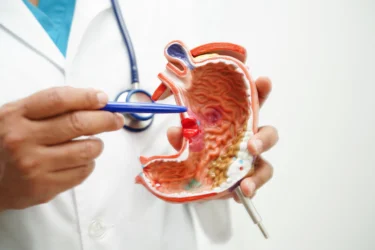
Gastric ulcers happen due to an imbalance in stomach acids and bacterial infection by Helicobacter pylori. A study3 by Adhikari et al. 2018 observed that gastric ulcers may be reduced with the polyherbal formulation of Pancharishta. It may have the action of safeguarding the stomach mucosal lining and maintaining its structure. Hence, Pancharishta may help preserve the cell lining of the stomach and defend against gastric ulcers. However, this is an animal study, more human studies are required to find the true Pancharishta uses for ulcers. Take medical help if you have gastric ulcers. Self-medication is not recommended.

Gastroparesis is a condition that may affect the regular movement of the muscles in the stomach. This might hamper the stomach emptying. An animal study3 by Adhikari et al., 2018 discovered that Pancharishta ingredients may help empty the stomach. This property has been confirmed in animals however, human studies are awaited to support the true use of Pancharishta for stomach emptying. Consult a doctor if you are experiencing stomach issues.

Though studies show the potential uses of Pancharishta in various conditions, these are insufficient and there is a necessity for further studies to develop the scope of the benefits of Pancharishta on human health.
You should consult a qualified doctor before having Pancharishta in large quantities. Do not discontinue or replace an ongoing modern medical treatment with an ayurvedic/herbal preparation of Pancharishta without consulting an ayurvedic physician. They will guide you with its form and dosage per your health condition.
However, more human research is needed to study the side effects of Pancharishta in humans. You must always consult your doctors and get the proper treatment if you come across side effects.
Also Read: Kumaryasava: Uses, Benefits, Side Effects & More!
Pancharishta in the prescribed dose might be safe. However, having it in larger amounts may produce harmful effects. Therefore, a few precautions are essential:
Also Read: Gulkand(Rose Petal Jam): Uses, Benefits, Side Effects By Dr. Smita Barode
Furthermore, clinical studies are required to suggest the herb-drug interaction between Pancharishta and other medicines. We direct that you consult with a doctor before taking Pancharishta preparation and only take it in the given dosage.
Also Read: Guduchi (Giloy): Uses, Benefits, Side Effects and More!
Pancharishta is an Ayurvedic decoction formulation of thirty-five different Ayurvedic herbs. It is a combination of Asava and Arishta. Pancharishta syrup is an alcoholic preparation that may contain 12% of self-generated alcohol. It has been widely used for all stomach-related disorders1,3.
Pancharishta properties may include carminative, laxative, antioxidant, anti-ulcer, digestive, anti-inflammatory and anti-spasmodic. It may help enhance immunity, reduce stomach acidity and help maintain liver health1,3. If you have any such issues consult with your doctors and avoid self-medication.
Pancharishta may contain thirty-five different plant ingredients. The major ingredient of Pancharishta may be a flower called Dhataki (Woodfordia fruticosa)1,2.
Overdosing on Pancharishta should be avoided. It contains a moderate amount of alcohol1. Therefore, excess consumption of Pancharishta might cause symptoms such as vomiting, mental confusion, dizziness, etc. It is best to avoid overdosing and if any complication appears immediately, seek medical help.
No studies have reported the safe use of Pancharishta during pregnancy. Pregnant women should always consult their doctors before using any Ayurvedic preparations such as Pancharishta. They will advise you on the best form and dosage. Do not self-medicate.
Disclaimer: The information provided here is for educational/awareness purposes only and is not intended to be a substitute for medical treatment by a healthcare professional and should not be relied upon to diagnose or treat any medical condition. The reader should consult a registered medical practitioner to determine the appropriateness of the information and before consuming any medication. PharmEasy does not provide any guarantee or warranty (express or implied) regarding the accuracy, adequacy, completeness, legality, reliability or usefulness of the information; and disclaims any liability arising thereof.
Links and product recommendations in the information provided here are advertisements of third-party products available on the website. PharmEasy does not make any representation on the accuracy or suitability of such products/services. Advertisements do not influence the editorial decisions or content. The information in this blog is subject to change without notice. The authors and administrators reserve the right to modify, add, or remove content without notification. It is your responsibility to review this disclaimer regularly for any changes.
Ayurvedic formulations may have emerged as a traditional alternative for a variety of health problems. Chandanasava is one such Ayurvedic formulation that may be considered a traditional medicine. Chandanasava is an Ayurvedic polyherbal formulation prepared using one or more medicinal herbs. The name Chandanasava is derived from one of the main ingredients, Chandan, known as sandalwood in English. Asava in Chandanasava refers to a fermented infusion that is produced by microbes. Chandanasava has a moderate alcohol content and is made with herbal juices from 24 different herbs. Chandanasava can be fermented with sugar, honey, or jaggery. For Chandanasava preparation, an equal amount of herb powder is mixed with water, as well as jaggery and sugar, and the mixture is boiled and chilled. This is then poured into large vessels and left to ferment for several days. It may belong to the alcohol-based category of drugs. Chandanasava could have been used as a valuable medicine to enhance health1,3. Let us discuss the health benefits of Chandanasava, its nutritional value, potential uses, and more.
Below listed are the Chandanasava ingredients:
Furthermore, phytochemical compounds like glucosides, alkaloids, phytosterols, stilbenes, terpenoids, phenols, flavonoids, glycosides, tannins, saponins and various alcohols and non‑volatile compounds may also be present in it1,2.
The benefits of Chandanasava may be due to the following properties:
Chandanasava may be ideal for enhancing human health2. The following may be the potential uses of Chandanasava:

Women in their forties and fifties may experience physiological changes that cause mild to severe symptoms such as hot flashes, body heat, night sweats, and a burning sensation. Certain phytochemicals in Chandanasava may have cooling properties. Regularly consuming Chandanasava (15-30 ml) with water may produce cooling effects within the body. These properties of Chandanasava may aid in the relief of symptoms such as hot flashes, body heat, night sweats, and a burning sensation5. More human research is required to suggest Chandanasava’s true use for body heat. Consult your doctor if you experience excessive body heat. Do not attempt to self-medicate.
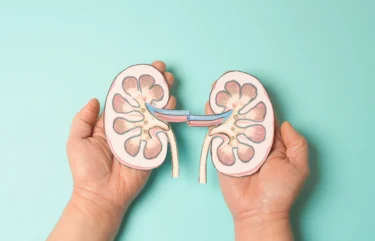
A study4 by Vinothkanna et. al. in 2022 showed Chandanasava may be used against chronic kidney diseases (a long-term kidney failure). It may contain compounds such as piperine and melatonin which may have the potential to stop the bacterial layer (biofilm) formation of infectious diseases involved in kidney diseases. More clinical research is required to form the true scope of Chandanasava against chronic kidney diseases. If you have kidney dysfunction, seek medical attention.
Chandanasava is a polyherbal Ayurvedic formulation. This formulation consists of many nutrients. Research suggests that there are some ten bioactive compounds. These bioactive compounds might be beneficial for managing various systemic diseases like chronic kidney diseases, cardiovascular diseases, etc4.
Dr. Siddharth Gupta, B.A.M.S, M.D (Ayu)

The most common clinical condition among people may be urinary tract infection. Burning sensations and dysuria are possible side effects (difficulty in urination). Chandanasava may be used as a urinary antiseptic. It may have a diuretic effect that may increase urine production and help clear out the urine passage, providing relief from urinary tract infections. Goel and Singh (1991) discovered that the ingredients in Chandanasava may have antimicrobial and antiseptic activity in a clinical trial. This activity may aid in the relief of symptoms such as burning and dysuria6. More human trials are required to establish the efficacy of Chandanasava for UTI. However, if you have a UTI, please take proper medication and do not self-medicate.

Dixit et al. (2012)3 discovered that Chandanasava has antiulcer activity in animals. A stomach juice imbalance can cause a peptic ulcer. Chandanasava may be used as a therapeutic agent to improve stomach conditions. It contains flavonoids, tannins, and terpenoids, all of which have antiulcer properties. As a result, Chandanasava may be beneficial in the healing of peptic ulcers in patients. However, more research is needed to determine Chandanasava’s antiulcer activity. Consult a doctor if you have ulcers.

Though studies show the potential uses of Chandanasava in various conditions, these are insufficient and there is a necessity for further studies to develop the scope of the benefits of Chandanasava on human health.
You should consult a qualified doctor before having Chandanasava in large quantities. Do not discontinue or replace an ongoing modern medical treatment with an Ayurvedic/herbal preparation of Chandanasava without consulting an Ayurvedic physician. They will guide you with its form and dosage per your health condition.
However, more human research is needed to study the adverse effects of Chandanasava on humans. You must consult your doctors to get the proper treatment if you encounter side effects.
Chandanasava is formulated using self-fermentation methods known as Arishtas and Asavas. Studies show that Chandanasava might have antibacterial and anthelmintic activities and might be useful against bacterial and parasitic infections7.
Dr. Rajeev Singh, BAMS
Also Read: Nagkesar (Mesua Ferrea): Benefits, Uses, Side Effects & More!
Chandanasava in small and prescribed dosages might be safe. However, having it in larger amounts may harm the body. Therefore, a few precautions are essential:
Also Read: Trikatu Churna: Uses, Benefits and Side Effects by Dr. Rajeev Singh
Chandanasava is a polyherbal Ayurvedic preparation. Its ingredients may or may not interact with other drugs. Further clinical studies are needed to suggest the herb-drug interaction between Chandanasava and other medicines. We advise that you consult with a doctor before taking Chandanasava and only take it in the prescribed dosage.
Also Read: Vasaka (Malabar Nut): Uses, Benefits and Side Effects by Dr. Rajeev Singh
Chandanasava is a polyherbal Ayurvedic formulation. Chandanasava is a fermented formulation made from 24 herbal ingredients. Chandanasava preparation is done using an equal amount of herbs powder in water, jaggery and sugar and boiled and cooled. Then this is poured into big vessels and allowed to ferment for days1.
The Chandanasava ingredients may include Chandan, Raktachandana, Hribera, Priyangu, Musta, Kashmari, Lodhra, Patola, Madhuka, Indivara, Parpata, Manjistha, Ashwattha, Patha, Vata, Priyangu, Bhunimba, Kanchanara, Shati, Rasna, Mocharasa Amra, Dhataki, Guda, Mridvika, water and sugar1.
Chandanasava may have properties such as diuretic, antioxidant, antimicrobial, appetizer, antiseptic, anti-inflammatory, analgesic and anti-ulcer activity1,6. More studies are needed to confirm the true properties of Chandanasava in humans.
Chandanasava may be taken with water5. However, consult with doctors, they will guide you with its better form and dosage according to your health condition.
In a clinical trial6 by Goel and Singh, 1991 found that the ingredients of Chandanasava may have antiseptic activity and antimicrobial activity. It may provide relief against urinary tract infections. This activity may help overcome symptoms like burning sensation and dysuria (burning urination). More human studies are necessary to state the uses of Chandanasava for UTI. However, if you suspect UTI, take proper medicine and do not self-medicate.
1. Vinothkanna A, Sekar S. Influence of intrinsic microbes on phytochemical changes and antioxidant activity of the Ayurvedic fermented medicines: Balarishta and Chandanasava. Pharmaco Study. 2018; 39:169–81. Available from: https://pubmed.ncbi.nlm.nih.gov/31000995/
2. Vinothkanna A, Karthikeyan B, Vijayan R, Sekar S. Assessment of anti-arthritic potential of traditionally fermented ayurvedic polyherbal product chandanasava by molecular modelling, docking and dynamics approaches. Intern J of Comput Biol and Drug Design. 2018;11(4):346–68. Available from: https://www.researchgate.net/publication/328949445_Assessment_of_anti-arthritic_potential_of_traditionally_fermented_ayurvedic_polyherbal_product_chandanasava_by_molecular_modelling_docking_and_dynamics_approaches
3. Dixit P, Sharma P, Jain DK, Jharia V. Systematic Evaluation of Antiulcer Activity of Herbal Formulation ‘Chandanasava’ in Rats. Asian Paci J of Trop Dis. 2012;2(SUPPL.1):192–6. Available from: https://www.researchgate.net/publication/257746795_Systematic_Evaluation_of_Antiulcer_Activity_of_Herbal_Formulation_’Chandanasava’_in_Rats
4. Vinothkanna A, Prathiviraj R, Sivakumar R, Ma Y, Sekar S. GC–MS and Network Pharmacology Analysis of the Ayurvedic Fermented Medicine, Chandanasava, Against Chronic Kidney and Cardiovascular Diseases. Appl Biochem and Biotech. 2022;1–26. Available from: https://link.springer.com/article/10.1007/s12010-022-04242-7
5. Choudhary P, Smitha MV. The Prevalence of Menopausal Symptoms and its Association with Marital Relationship in Perimenopausal Women of Eastern India. J Midlife Health. 2025 Jul-Sep;16(3):285-294. doi: 10.4103/jmh.jmh_82_25. Epub 2025 Sep 5. PMID: 40951856; PMCID: PMC12431706. Available from: https://pmc.ncbi.nlm.nih.gov/articles/PMC12431706/
6. Goel K, Singh R. Clinical Trial of Candanasava, In the Treatment of Urinary Tract Infection. Vol. Anci Sci of Life.1991;X(4):248–52. Available from: https://pmc.ncbi.nlm.nih.gov/articles/PMC3331297/
7. Kumar SV, Sandeep M, Kamal D, et al. Antibacterial and anthelmintic activity of selected fermented Ayurvedic herbal formulations. Drug Invention Today. 2010 Jul;2(7):347-348. Available from: https://web.p.ebscohost.com/
Disclaimer: The information provided here is for educational/awareness purposes only and is not intended to be a substitute for medical treatment by a healthcare professional and should not be relied upon to diagnose or treat any medical condition. The reader should consult a registered medical practitioner to determine the appropriateness of the information before consuming any medication. PharmEasy does not provide any guarantee or warranty (express or implied) regarding the accuracy, adequacy, completeness, legality, reliability, or usefulness of the information; and disclaims any liability arising thereof.
Links and product recommendations in the information provided here are advertisements of third-party products available on the website. PharmEasy does not make any representation of the accuracy or suitability of such products/services. Advertisements do not influence the editorial decisions or content. The information in this blog is subject to change without notice. The authors and administrators reserve the right to modify, add, or remove content without notification. It is your responsibility to review this disclaimer regularly for any changes.
Trayodashang guggulu is one of the primary Ayurvedic polyherbal formulations. It consists of Babula (the stem bark of Acacia nilotica), Hapusa (the fruits of Juniperus communis), Shatavari (the roots of Aspargus recemosus), Ashwagandha (the roots of Withania somnifera), Sunthi (the rhizome of Zingiber officinale), Satavha (the fruits of Anethum sowa), Vradadaru (the roots of Argyeria nervosa), Sati (the rhizome of Hidichium spicatum), Shuddha guggulu (exudates of Commiphera mukul), Rasana (the roots and leaves of Pluchea lanceolata), Guduchi (the stem of Tinospora cordifolia), Gokshuara (the fruits Tribulus terrestris), Yavani (Trachyspermum ammi fruits) and Goghrat (ghee). The ayurveda formulation trayodashang guggulu is mentioned in the Ayurveda classic Bhaishaja Ratnavali and the Ayurveda Formulary of India. Trayodashang guggulu may be used for various ailments. Let us look at some of the health benefits of trayodashang guggulu1.
The composition of trayodashang guggulu is as follows:
Several studies have shown that Trayodashang guggulu may have the following properties:
Some of the potential uses of trayodashang guggulu are:

The worst diet habits with the western lifestyle and continuous work in front of laptops are the major reasons for spondylosis. Trayodashang guggulu may be used against spondylosis. A study2 by Sawant et al. in 2017 showed that Trayodashang guggulu might be beneficial for cervical spondylosis. Constituents like Shatavari, Ashwagandha and Guduchi are rejuvenators and may give stability to the muscles (dhatus). Whereas babbul acts on bones (asthidhatwagni) and may provide firmness. However, further studies are required to check if trayodashang guggulu may help in the case of cervical spondylosis. Therefore, you must consult your doctor if you experience any symptoms of cervical spondylosis. Do not self-medicate.
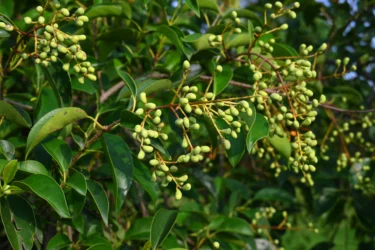
The phenols, alkaloids, flavonoids and other phenolic compounds present in trayodashang guggulu may show antioxidant activity. This was demonstrated by a study1 by Dadoriya et al. in 2018. It may deactivate the free radicals (harmful molecules present in the body) and protect them from various damages. Further studies are required to check the antioxidant activity of trayodashang guggulu.
From my experience, Trayodashang Guggulu may aid in gout. Studies1 suggest that Trayodashang Guggulu shows antioxidant and anti-inflammatory effects that make it a potential remedy in cases of inflammatory disease such as gout.
Dr. Siddharth Gupta, BAMS, MD (Ayu)

Trayodashang guggulu may be beneficial for several inflammatory conditions like the stiffness of the knee, bone marrow disorder, lockjaw, inflammation of ligaments, neurological and musculoskeletal diseases, pain in the arm and cardiac failure and bone fracture due to the presence of bioactive compounds like flavonoids and phenols. A study1 by Dadoriya et al. in 2018 showed that trayodashang guggulu might inhibit proteinase and lipoxygenase (enzymes that promote inflammation). However, further studies are required to check if trayodahsang guggulu may reduce inflammation. Therefore, you must consult your doctor if you suspect inflammation.

Arthritis is a disease associated with inflammatory pain. Bioactive compounds like flavonoids and phenols present in trayodashang guggulu may be responsible for reducing inflammatory pain. A study3 by Gupta et al. in 2022 showed that trayodashang guggulu might inhibit inflammatory mediators like COX-2 and reduce inflammatory pain, which may be beneficial for arthritis. Inflammatory mediators are molecules in the body that cause inflammation. However. Further studies are required to check if trayodashang guggulu may be helpful in the case of arthritis. Therefore, you must consult your doctor if you experience any symptoms of arthritis.

Sciatica refers to the pain radiating down one or both legs from the lower back along the sciatic nerve. According to the studies5 by Moharana et al. in 2018, trayodashang guggulu may be beneficial in the case of sciatica. Effects of trayodashang guggulu are particularly noticeable in vata dosha, the primary cause of joint and bone-related disorders3,7. However, further studies are required to check if trayodashang guggulu may be beneficial for sciatica. You must immediately consult your doctor if you suspect any symptoms of sciatica.

The condition that causes pain in the forearm is known as the tennis elbow. Pain, tenderness, restricted movement, stiffness and diminished grip strength are the primary clinical signs of tennis elbow. The study6 by Rajurkar et al. in 2022 showed that the trayodashang guggulu tablet might reduce pain and functional disability related to the tennis elbow. However, further studies are required to check if trayodashang guggulu may be beneficial in the case of tennis elbow. Therefore, you must consult your doctor if you experience any symptoms of tennis elbow.

Trayodashanga Guggulu may directly affect the Asthigata Vata (bone and soft tissue pain) and brings the vitiated Vata Dosha back into balance. An imbalance in vata dosha causes conditions related to joints and bones. The Ayurvedic mind-body element associated with air and space is called vata dosha. It governs all movement and processes in your mind and body, including blood flow, elimination, breathing and thought action. A Vata imbalance may lead to bone thinning, according to Ayurveda. Therefore, trayodashang guggulu may be beneficial in case of osteoporosis. This was shown by a study7 conducted by Sannakki et al. in 2020. However; further studies are required to check if trayodashang guggulu may be beneficial for osteoporosis. Therefore, you must consult your doctor if you experience any symptoms of osteoporosis.

According to the study4 by Prasad et al. in 2016, trayodashang guggulu may help improve the immune system. It may have immune-modulating properties, which may stimulate the immune system. However, further studies are required to check if trayodashang guggulu may affect the immune system.
Though studies show the benefits of trayodashang guggulu in various situations, these are insufficient and further studies are needed to establish the true extent of trayodashang guggulu on human health.
Trayodashang guggulu is a polyherbal ayurveda preparation that is available as a tablet. It can be given with gruel (thin porridge), warm water and milk of meat soup5.
You must consult a doctor before taking large quantities of trayodashang guggulu or herbal supplements. Do not discontinue an ongoing modern medical treatment with an ayurvedic/herbal preparation without consulting a qualified doctor.
A high dose of trayodashang guggulu may have the following side effects:
You must consult your doctor if you experience any side effects after consuming trayodashang guggulu.
Also Read: Nagkesar (Mesua Ferrea): Benefits, Uses, Side Effects & More!
As with any other general medicine, general precautions should be taken while having trayodashang guggulu. You must consult your doctor before having trayodashang guggulu. Pregnant women and lactating mothers should take special care. Precaution should be taken before giving trayodashang guggulu to the elderly or children. In such cases, you must have trayodashang guggulu only if your doctor prescribes it.
Also Read: Licorice (Mulethi): Uses, Benefits, Side Effects, and More!
There is not enough evidence on the interaction of trayodashang guggulu with other drugs. Further studies on the interaction of trayodashang guggulu are required. Therefore, you must consult your doctor if you are on any other medication before consuming trayodashang guggulu.
Also Read: Raisins (Kishmish): Uses, Benefits, Side Effects By Dr. Smita Barode
Trayodashang guggulu is an essential Ayurvedic polyherbal formulation. It consists of Babula, Hapusa, Shatavari, Ashwagandha, Sunthi, Satavha, Vradadaru, Sati, Shuddha guggulu, Rasana, Guduchi, Gokshuara, Yavani and Goghrat (ghee)1.
Trayodashang guggulu may be used to reduce pain and inflammation. It may act against the conditions like tennis elbow, arthritis, osteoporosis, sciatica and cervical spondylosis. It may have antioxidant properties and may enhance the immune system. However, further studies are required to check whether trayodashang guggulu may benefit the mentioned conditions. Therefore, you must consult your doctor if you experience symptoms of the mentioned conditions1,6.
Trayodashang guggulu is a polyherbal ayurveda preparation that is available as a tablet. It can be given with gruel (thin porridge), warm water and milk of meat soup4.
Trayodashang guggulu may cause stomach upset, belching, indigestion and loss of appetite. You must consult your doctor if you experience any side effects8.
Bioactive compounds like flavonoids and phenols present in trayodashang guggulu may be responsible for reducing inflammatory pain. They might inhibit inflammatory mediators (molecules in the body that cause inflammation) and reduce inflammatory pain, which may be beneficial for arthritis3. However, you must consult your doctor if you experience any symptoms of arthritis.
Disclaimer: The information provided here is for educational/awareness purposes only and is not intended to be a substitute for medical treatment by a healthcare professional and should not be relied upon to diagnose or treat any medical condition. The reader should consult a registered medical practitioner to determine the appropriateness of the information and before consuming any medication. PharmEasy does not provide any guarantee or warranty (express or implied) regarding the accuracy, adequacy, completeness, legality, reliability or usefulness of the information; and disclaims any liability arising thereof.
Links and product recommendations in the information provided here are advertisements of third-party products available on the website. PharmEasy does not make any representation on the accuracy or suitability of such products/services. Advertisements do not influence the editorial decisions or content. The information in this blog is subject to change without notice. The authors and administrators reserve the right to modify, add, or remove content without notification. It is your responsibility to review this disclaimer regularly for any change
Jackfruit is the largest tree fruit that gained popularity due to its sweet, fleshy and energy-rich pulp. The exterior of jackfruit is hard green or yellow initially and turns to yellowish brown after ripening. The inner edible flesh of the jackfruit consists of nutritious pulp coated around the seed, formed by the fusion of flowers. Jackfruit is a non-seasonal fruit that grows on evergreen trees in tropical areas. The biological name of the jackfruit tree is Artocarpus heterophyllus Lam, belonging to the family Moraceae. It is cultivated in Bangladesh, Sri Lanka, Malaysia and various parts of Southeast Asia, Africa and America. Jackfruit grows abundantly in India and is native to the Western Ghats of India1,2.
Apart from the flesh, jackfruit seeds are also edible and are used in cooked dishes. The jackfruit seeds with a thin brown seed coat, known as spermoderm, are enclosed in a white layer. The brown spermoderm consists of white cotyledon rich in protein and starch. Jackfruit seed has a lot of potential benefits, especially in the cosmetics, paper, pharmaceutical and bio-nanotechnology industries2.
Did you know?
The nutrient value of jackfruit seed is as under:
The potential health benefits of jackfruit seed are:
Magnesium is a mineral crucial for body functioning and keeps our bones strong by absorbing calcium in bones. Calcium makes our bones strong and rigid and allows normal body movement. Swami et al., 2012 presented an overview of the functional and medicinal value of Jackfruit. They mentioned that jackfruit seeds are rich in magnesium, which may help in the absorption of calcium in the bones. Magnesium, along with calcium, strengthens bones and relieves disorders related to bones, e.g. osteoporosis (weak and brittle bones). Thus, it is suggested that jackfruit seeds may have potential benefits in strengthening the bones. Further studies should be conducted to validate the efficacy of jackfruit seeds2.
Antioxidants are agents that reduce the effects of free radicals responsible for chronic health problems. Ranasinghe et al. in 2019 mentioned that jackfruit seeds possess a good amount of ascorbic acid and gallic acid which may protect the body from the negative effects of excess free radical production thus promoting antioxidant activity. Therefore, it can be concluded that jackfruit seeds may help in contributing to the antioxidant activity. More data is required to establish the true extent of its benefit on human health1.
Mahanta et al., 2015 and Ranasinghe et al., 2019 mention that the jackfruit seeds extract has shown efficacy against S.aureus, E. coli and B. megaterium revealing that jackfruit seed may have some antimicrobial effects. It may be used to formulate pharmaceutical agents for infectious diseases. Jackfruit seed powder may also help against food contamination. Thus, the seeds of jackfruit may have the potential as an antibacterial agent. Further research should be conducted to validate the efficacy of jackfruit seeds1,3.
Dwitiyanti et al., 2019 conducted a study on pregnant female rats. The jackfruit seed extract was administered to diabetic pregnant female rats. The blood glucose levels of pregnant female rats decreased after the administration of jackfruit seed extracts. Therefore, it is suggested that the jackfruit seed extract possesses activities that may have the potential of decreasing blood sugar levels. Further clinical research is required to investigate the true benefit of jackfruit seed in human health5.
Though there are studies that show the benefits of jackfruit seed in various conditions, these are insufficient and there is a need for further studies to establish the true extent of the benefits of jackfruit seed on human health.
Due to their high fibre content, I’ve experienced that jackfruit seeds may help reduce the risk of heart disease, avoid constipation, and may aid in weight reduction. They are also a good source of B-complex vitamins. Additionally, resistant starch, which may regulate blood sugar and may maintain intestinal health, is included in jackfruit seeds6.
Dr. Siddharth Gupta, B.A.M.S, M.D (Ayu)
You must consult a qualified doctor before taking any jackfruit seed supplements. Do not discontinue or replace an ongoing treatment of modern medicine with an ayurvedic/herbal preparation without consulting a qualified doctor.
Additionally, the researchers have found that the seeds have an abundance of highly soluble protein that may aid in the management of anxiety and stress6.
Dr. Rajeev Singh, BAMS
The most common side effects related to jackfruit seed are:
Also Read: Jackfruit (Kathal): Uses, Benefits, Side Effects and More!
Patients suffering from digestive disorders must consult their physician before consuming jackfruit seeds. Though, there is not much data available on the consumption of jackfruit seeds during pregnancy and breastfeeding. Thus, lactating and pregnant females should ask their gynaecologist before consuming jackfruit seeds. The elderly and children should also consume jackfruit seeds in moderation if necessary and consult a physician if suffering from any health-related disorders.
In my experience, the seeds have a very poor capacity to absorb water and fat. Hence, it may aid in maintaining a healthy weight6.
Dr. Smita Barode, B.A.M.S, M.S.
No interactions are reported in the literature reviewed. If you are on medication, consult an experienced and qualified doctor before taking any jackfruit seed supplements. This can possibly help in avoiding interaction with other medicines.
Also Read: Hemp Seed: Uses, Benefits and Side Effects by Dr. Smita Barode
The seed of jackfruit contains a high amount of protein and other vitamins and minerals, which adds to its nutritional value. Thus, jackfruit seed is edible and is used as a nutritious source of food.
Jackfruit seeds are used after boiling, roasting or cooking. The seeds are boiled in sugar water to serve as a dessert. It may also be used as an ingredient in vegetables and curries in Asian dishes.
The jackfruit seeds may serve a potential in human health and may benefit as an antimicrobial, antidiabetic and antioxidant. It may also provide benefits in strengthening the bones. It may also be used as a substitute to flour with an increase in protein and fibre content.
The patients suffering from digestive disorders must avoid consuming jackfruit seeds. Elderly, children and pregnant and lactating females should consult the doctor before taking jackfruit seeds in any form.
The flour of jackfruit seed may be used in various bakeries and biscuit factories to make cookies. It might also be used as binding and thickening agent in various food industries.
Disclaimer: The information provided here is for educational/awareness purposes only and is not intended to be a substitute for medical treatment by a healthcare professional and should not be relied upon to diagnose or treat any medical condition. The reader should consult a registered medical practitioner to determine the appropriateness of the information and before consuming any medication. PharmEasy does not provide any guarantee or warranty (express or implied) regarding the accuracy, adequacy, completeness, legality, reliability or usefulness of the information; and disclaims any liability arising thereof.
Links and product recommendations in the information provided here are advertisements of third-party products available on the website. PharmEasy does not make any representation on the accuracy or suitability of such products/services. Advertisements do not influence the editorial decisions or content. The information in this blog is subject to change without notice. The authors and administrators reserve the right to modify, add, or remove content without notification. It is your responsibility to review this disclaimer regularly for any changes.
“With the changing times, not only the country’s policymakers but the whole world is realising the importance of Ayurveda. Who would’ve thought that people in the upcoming generations would prefer a bottle of gooseberry or bottle gourd juices over carbonated drinks?” Despite this realization of the health benefits of plants and fruits, there are fruits like Phalsa which, although are high in nutrients but low in popularity. Phalsa is a plant that originates in Southeast Asian countries like India, Nepal, Sri Lanka and Bangladesh and is mainly grown for its fruit. The scientific name of the Phalsa fruit is Grewia asiatica, also known as the Indian Sherbet berry. It is a seasonal plant and the fruits are generally obtained in the summer. Phalsa fruit resembles grapes in its shape and size. They are purple in colour with a sour-sweet taste. The fruit is a powerhouse of vitamins and minerals and offers many health benefits; let us know more about those benefits1.
Phalsa fruit is rich in carbohydrates, fibres, proteins, vitamins A, B3 and C and minerals like potassium, calcium, iron and phosphorus. The phytochemicals present in Phalsa fruit include anthocyanins, tannins, phenols and flavonoids. The nutritional chart of this fruit is given below.
Phalsa fruit shows numerous scientifically proven properties; some of which are mentioned below1:
I’ve discovered that Phalsa fruits have a cooling effect on the body. Phalsa fruit is rich in phenols. This property makes it a potential natural remedy for excessive body heat9.
Dr. Siddharth Gupta, B.A.M.S, M.D (Ayu)
Some of the potential benefits of Phalsa fruit are described below.

Diabetes (Type I & II) is characterised by an increase in blood glucose due to a reduction or resistance to insulin (a hormone that regulates blood glucose). Literature shows that fruits rich in polyphenols may positively impact diabetes. Parveen et al. conducted a study2 on diabetic rabbits in 2013 to assess the effect of Phalsa fruit on blood glucose. This study showed a reduction in rabbits’ blood glucose after administering Phalsa fruit. Additionally, this fruit has a low glycemic index and the presence of polyphenols may help reduce blood glucose levels. This indicates that Phalsa fruit may help manage diabetes. However, to claim these results in humans, we need more studies. It is further advised not to self-medicate and consult your physician for proper management of diabetes3.

Dyslipidemia is characterised by an increase in total cholesterol and triglycerides. Studies have shown that Phalsa fruit may potentially control the altered parameters in dyslipidemia. An animal study4 conducted by Parveen et al. in 2013 showed a positive relationship between the consumption of this fruit and lipid levels. Rabbits administered Phalsa fruit extract (200mg/kg) showed reduced total cholesterol and triglycerides. This may indicate that this fruit’s consumption may help manage dyslipidemia. However, more studies on humans are needed to support these claims. Additionally, it is advised not to rely on Phalsa fruit as a remedy for managing dyslipidemia and kindly consult your physician for the proper management of dyslipidemia.

Breast cancer is one of the most common cancers affecting women worldwide; different ayurvedic treatments are being tested for their effectiveness towards breast cancer. A review2 by Muhammed et al. in 2013 states that Phalsa fruit contains smart molecules called anthocyanins which help reduce the multiplication of abnormal cells and the risk of cancers. Thus, it may be concluded that Phalsa fruit may reduce breast cancer risk. However, we need more human studies to claim these results accurately. Also, it is advised not to consider Phalsa fruit as an alternative to modern medicine; you should always consult your doctor for proper management of breast cancer.
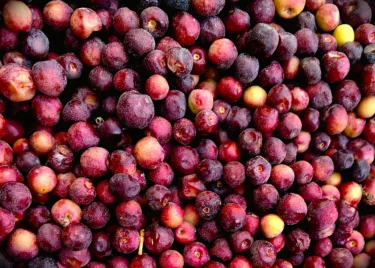
Traditionally, herbs, spices, leaves and fruits obtained from plants were used for managing bacterial infections. Muhammed et al. conducted a review2 in 2013 to test the efficacy of Phalsa fruit on different bacteria. The presence of polyphenols in Phalsa fruit inhibited the growth of S.typhi bacteria; thus, it may have the potential to manage bacterial infections like Typhoid caused by S.typhi bacteria. However, we need more studies to confirm these results in humans. Additionally, you should not consider Phalsa fruit as a remedy for managing Typhoid; it is always advised to consult a physician for proper management of Typhoid.

Depression is a mood disorder that results in sadness and loss of interest and may affect everyday activities. Previous studies have shown that healthy nutrition may help in managing various ailments. A study4 conducted by Imran et al. in 2021 stated that Phalsa fruit, due to the presence of antioxidants like phenols, anthocyanins, flavonoids, etc., may help in managing depression. Additionally, this fruit can potentially reduce anxiety (anxiolytic effect). Therefore, Phalsa fruit may have the potential to manage depression. To claim these results for humans, we need more studies. It is further advised not to consider Phalsa fruit as an alternative to modern medicine; kindly consider your doctor for proper management of depression5.

Though there are studies that show the benefits of Phalsa fruit in various conditions, these are insufficient and there is a need for further studies to establish the true extent of the benefits of Phalsa fruit on human health.
Let me give you a tip! Phalsa fruit might take care of your skin. Phalsa fruit is rich in antioxidants and numerous vitamins and minerals, which makes Phalsa a potential contributor to achieving flawless skin10.
Dr. Rajeev Singh, BAMS
You must consult a qualified doctor before taking any herbal supplements. Do not discontinue or replace an ongoing treatment of modern medicine with an ayurvedic/herbal preparation without consulting a qualified doctor.
Phalsa fruit is considered safe when eaten in minimal amounts. A few side effects related to the consumption of Phalsa fruit include:
However, if you experience any adverse reactions to Phalsa fruit, it is advised to discontinue its intake and immediately contact a doctor or your Ayurvedic physician who has prescribed it. They will be able to guide you appropriately for your symptoms.
Also Read: Mango (Aam): Uses, Benefits, Side Effects by Dr. Smita Barode
Consuming Phalsa fruit is okay if taken in moderate amounts. However, general precautions must be followed in the following conditions1:
Also Read: Hadjod (Cissus Quadrangularis): Uses, Benefits, Side Effects & More!
However, you must always seek the advice of your Ayurvedic physician about the possible interaction of Phalsa fruit with other drugs and follow the prescription thoroughly, as they will know your health condition and other medications you are taking.
Also Read: Shallaki (Boswellia serrata): Uses, Benefits, Side Effects & More!
Phalsa fruit resembles grapes in its shape and size. They are purple in colour and sour to sweet in taste1.
Phalsa fruit is called Grewia asiatica1.
In Hindi, Phalsa fruit is called Sherbet berry.
No, there are no proven results on the efficacy of the Phalsa fruit for reducing weight.
The safety of Phalsa fruit consumption in pregnancy is not well-established; it is therefore advised to consult your doctor if you plan to add Phalsa fruit to your diet.
Disclaimer: The information provided here is for educational/awareness purposes only and is not intended to be a substitute for medical treatment by a healthcare professional and should not be relied upon to diagnose or treat any medical condition. The reader should consult a registered medical practitioner to determine the appropriateness of the information and before consuming any medication. PharmEasy does not provide any guarantee or warranty (express or implied) regarding the accuracy, adequacy, completeness, legality, reliability or usefulness of the information; and disclaims any liability arising thereof.
Links and product recommendations in the information provided here are advertisements of third-party products available on the website. PharmEasy does not make any representation on the accuracy or suitability of such products/services. Advertisements do not influence the editorial decisions or content. The information in this blog is subject to change without notice. The authors and administrators reserve the right to modify, add, or remove content without notification. It is your responsibility to review this disclaimer regularly for any changes.
Gandhak Rasayan is a herbal medicine, known as Moringa ovalifolia in various botanical sources. The formulations made from Gandhaka are referred to as Gandhaka Kalpas, where Gandhak in English refers to sulfur and Kalpas refers to medicinal preparation. It is used as a rejuvenator in Ayurveda, which promotes positive health and immunity. The increase in immunity helps the human body to resist various diseases. This property of Gandhak Rasayan also makes it a prophylactic agent (an agent that prevents disease) along with a therapeutic agent.
According to ancient scholars, it is known as “Balivas”, as the king of Bali uses this very attractive sulfur internally to gain more power. Also, if Gandhak is combined with mercury, it transforms into a substance capable of eliminating diseases, known as murcchita state. Thus, gandhak based preparation has widespread clinical use and therefore, holds an important place in ayurvedic pharmaceutics1,3.
The properties of Gandhak Rasayan are:
Gandhak Rasayan vati (tablet) and Gandhak Rasayan powder possess various health benefits. Some of its potential benefits are:

Clinical trials conducted by Sachin et al., 2017 to investigate the role of Gandhak Rasayan vati in Shushka Vicharchika (Eczema) exhibited good clinical improvement in terms of relieving individual symptoms as well as reducing the severity of the disease. Significant reduction in Daha, Kandu (itching), Ruja (sickness), and Sparshasahatva (burning sensation) was observed. Thus, it might be an effective solution for eczema6.

Gandhak Rasayan is considered a wide-spectrum antimicrobial agent with anti-fungal and anti-bacterial properties. Various physicians recommend Gandhak Rasayan vati for the treatment of fungal or viral infection because of its bigger zone of inhibition with fewer side effects and comparatively low cost. The clinical efficacy of Gandhak Rasayan in non-infective post-operative cases was assessed by Kadam et al., 2022. This study2 revealed that various microorganisms that presented resistance to certain tested antibiotics showed good susceptibility to the Gandhak Rasayan. Therefore, Gandhak Rasayan is a versatile ayurvedic medicine that has a wide range of health-benefiting effects.

In a case study, the patient suffering from kushta (Tinea corporis) was treated with Gandhaka Rasayan along with exterior and interior applications of a combination of various oils and vati for 14 days. It has antifungal and antibacterial qualities. It mostly influences Rakta Dhatu and results in Rakta shodhan (purification of blood). Due to its antifungal qualities, it aids in decreasing infection. Additionally, it functions as a rasayan and aids in digestion and skin complexion improvement. Skin problems are treated with sulfur both orally and topically5.

Vulvitis is the inflammation of the vulva (soft folds of skin outside the vagina) which can result either from injuries, infection, allergy, or irritants. Verma and his colleague, 2021 evaluated the efficacy of Gandhak Rasayan lotion mixed with Gomutra arka, suddha Tankan in an effective and palatable management of vulvitis. It was advised to apply lotion on the affected area after the bath for 10 minutes and wash with lukewarm Triphala. The treatment was continued for 15 days in two consecutive months. The results demonstrate a little reduction in the primary vulvitis symptoms and the patches of redness or swelling caused by vulvitis also effectively faded after therapy. Thus, concluding that Gandhak Rasayan may have some potential in the management of vulvitis7.

Gandhak Rasayan may also help in patients with complications such as ulcerative skin lesions over the legs, hands, and back. A similar case was treated with Gandhak Rasayan tablet (125mg), BD for 15 days, by Dr Dhodapkar in 2018. Patient with discharge and pruritis along with pedal oedema and ulcerative skin lesions. Gandhak Rasayan was prescribed for the reduction of infection and healing of skin lesions. It showed a significant reduction in oedema and partial healing of skin lesions in around 15 days8.
I recently read an article which says the use of Gandhak Rasayana may aid in relieving the symptoms of arthritis. Gandhak Rasayana is known for its rejuvenating and anti-inflammatory properties9.
Dr. Siddharth Gupta, B.A.M.S, M.D (Ayu)
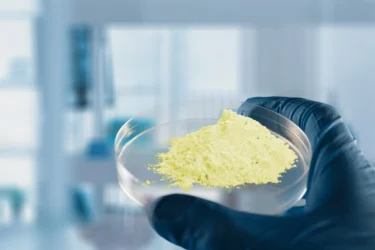
Though there are studies that show the benefits of the herb in various conditions, these are insufficient and there is a need for further studies to establish the true extent of the benefits of Gandhak Rasayan on human health.
Gandhak Rasayan is used in tablet form for the management and potential treatment of various diseases8. It may also be used in the form of topical agents like lotions mixed with other herbal medicines to treat skin disorders7. Gandhak Rasayan is also used as a powder with different herbal juices2.
You must consult a qualified doctor before taking any herbal supplements. Do not discontinue or replace an ongoing treatment of modern medicine with an ayurvedic/herbal preparation without consulting a qualified doctor.
The most common Gandhak Rasayan side effects are loose stools, upset stomach, abdominal cramps, and bloating2. The histopathological analysis of rat models administered with repeated doses of Gandhak Rasayan showed mild hemorrhage in the Kidneys of rats along with mild fatty liver1.
In my experience, Gandhak Rasayana may be used to delay the premature greying of hair. Gandhak Rasayana has a proven rejuvenator property10.
Dr. Rajeev Singh, BAMS
Since there is insufficient information available on the safety and efficacy of Gandhak Rasayan during pregnancy and breastfeeding, it is best to avoid this rasayan in these groups2.
Though there is no information on the interaction of gandhak rasayan with other drugs, some medications should never be combined. If you’re using any other prescription or nonprescription (over-the-counter [OTC]) medication, consult your doctor before taking it.
Also Read: Kalmegh: Uses, Benefits, Side Effects, Precautions & More!
The side effects of Gandhak Rasayan include loose stool, abdominal cramps, upset stomach, and bloating. Fatty liver and kidney hemorrhage are also some other side effects reported in preclinical studies.
Gandhak Rasayan may help in relieving pain, managing diabetes, respiratory and skin disorders along treating allergies. It may also act as an appetizer and rejuvenator. Gandhak Rasayan may also help in building immunity and positive health.
It is mostly advised to avoid Gandhak Rasayan during pregnancy and lactation. One should always consult a medical health practitioner before taking any herbal drugs.
Gandhak Rasayan consists of sulfur, cow milk, cinnamon, amala, cardamom, patra, guduchi, vibhitaki, haritaki, shunto, and bringharaj along with sugar and water.
It is available as Gandhak Rasayan powder, which can be formulated as Gandhak Rasayan vati (tablet) and as a topical lotion for skin disorders.
Disclaimer: The information provided here is for educational/awareness purposes only and is not intended to be a substitute for medical treatment by a healthcare professional and should not be relied upon to diagnose or treat any medical condition. The reader should consult a registered medical practitioner to determine the appropriateness of the information and before consuming any medication. PharmEasy does not provide any guarantee or warranty (express or implied) regarding the accuracy, adequacy, completeness, legality, reliability or usefulness of the information; and disclaims any liability arising thereof.
Links and product recommendations in the information provided here are advertisements of third-party products available on the website. PharmEasy does not make any representation on the accuracy or suitability of such products/services. Advertisements do not influence the editorial decisions or content. The information in this blog is subject to change without notice. The authors and administrators reserve the right to modify, add, or remove content without notification. It is your responsibility to review this disclaimer regularly for any changes.
Next Page »« Previous Page